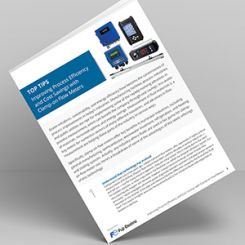MEXICO CITY — The U.S. Environmental Protection Agency (EPA) Administrator Lee Zeldin met with Secretary of the Environment and National Resources of Mexico Alicia Bárcena Ibarra at the Council of the Commission for Environmental Cooperation (CEC), to sign a Memorandum of Understanding (MOU) between the United States and Mexico to address and solve the decades-long Tijuana River sewage crisis. For many decades, untreated raw sewage has flowed into Southern California from Mexico, polluting the Tijuana River Valley, closing beaches, fouling the air, harming the region’s economy, and sickening people on both sides of the border.
This agreement achieves the three priorities and milestones:
- Mexico will obligate the remaining $93 million of Minute 328 funds that they hadn’t yet obligated.
- The timeline for completion of the remaining Minute 328 projects have been reduced.
- Several necessary Mexico side projects have been added to account for future population growth in Tijuana and operation and maintenance costs.
This MOU is a direct result of the recent negotiations between the U.S. and Mexico following Administrator Zeldin’s visit to San Diego in April. Immediately after the trip, Administrator Zeldin and EPA leadership began working with the U.S. Department of State to begin negotiating with Mexico.
This agreement outlines specific actions the United States and Mexico will take to implement a permanent 100% solution to end this crisis.
MOU Details
Under the signed MOU, both nations have agreed to expedite the timelines of critical infrastructure projects in the U.S. International Boundary and Water Commission (IBWC) Minute No. 328 ("Minute 328"). This includes completion of all projects by Mexico no later than December 31, 2027—in some cases, four years ahead of schedule.
The United States—which has withheld sending more American dollars to projects until Mexico fulfilled their obligations toward other projects—agreed to release EPA Border Water Infrastructure Program (BWIP) funding to complete the rehabilitation of Pump Station 1 and the Tijuana River collection pipes. This is because Mexico agreed to fund and begin construction on two priority projects this year, the diversion of treated effluent from two wastewater treatment plants and the rehabilitation of the Parallel Gravity Line. This increased the total number of projects planned for this year from two to six.
To that end, Mexico will immediately seek internal funding to initiate the construction process for the diversion, which will divert 10 million gallons per day (MGD) of treated effluent entering the Tijuana River, and the rehabilitation of the Parallel Gravity Line. This will be completed no later than December 31, 2025.
Mexico will allocate the remaining funds needed to complete all remaining Minute 328 projects as part of their 2026 and 2027 budgets, in keeping with the deadline of December 31, 2027, or sooner. The first half of projects will be funded in this year’s ongoing Mexican President’s budget request, and completion in 2026 will follow a U.S.-determined priority schedule.
As soon as August 28, the U.S. IBWC agrees to complete the expansion of the South Bay International Wastewater Treatment Plant (SBIWTP) from 25 to 35 MGD, increasing treatment capacity in record time.
To accomplish the permanent, long-term and durable solution, Mexico has agreed to enter into a new Minute with the United States no later than December 31. This new Minute will contain, at minimum, one dozen new actions that the United States deemed necessary to permanently end this crisis.
Within the next 100 days, both the U.S. and Mexico agree to evaluate all infrastructure projects schedules to ensure projects are on the shortest possible timelines for completion. Visit epa.gov for the full MOU.

